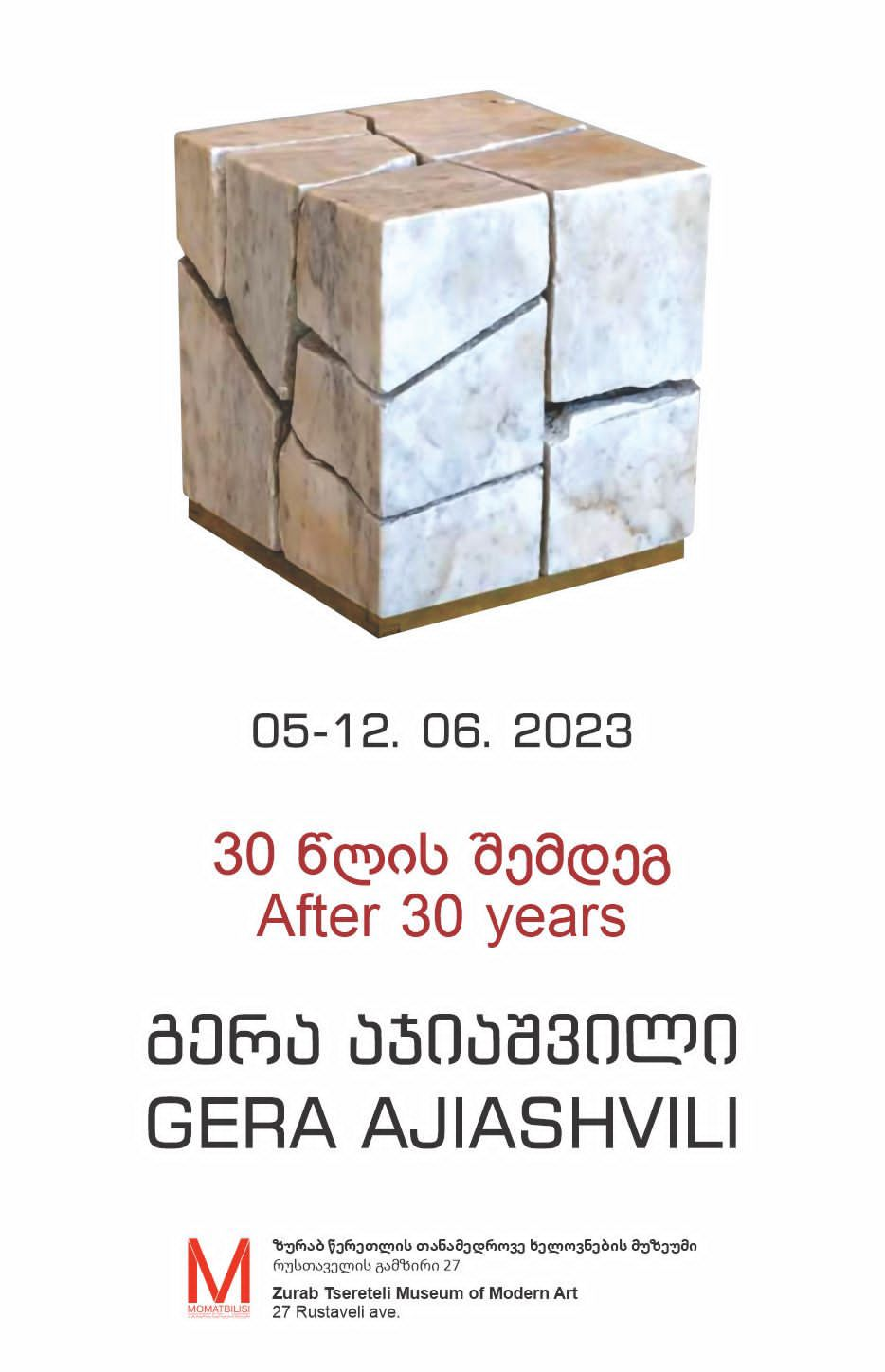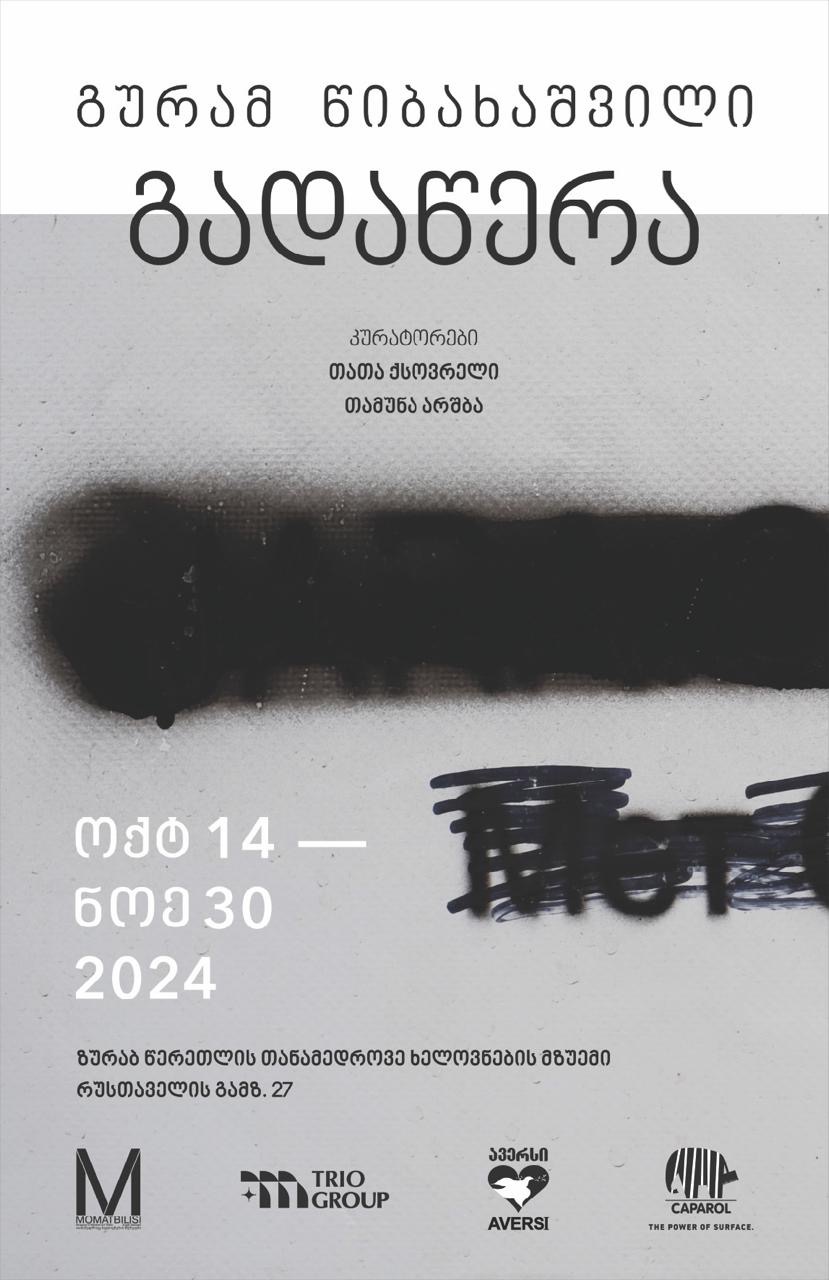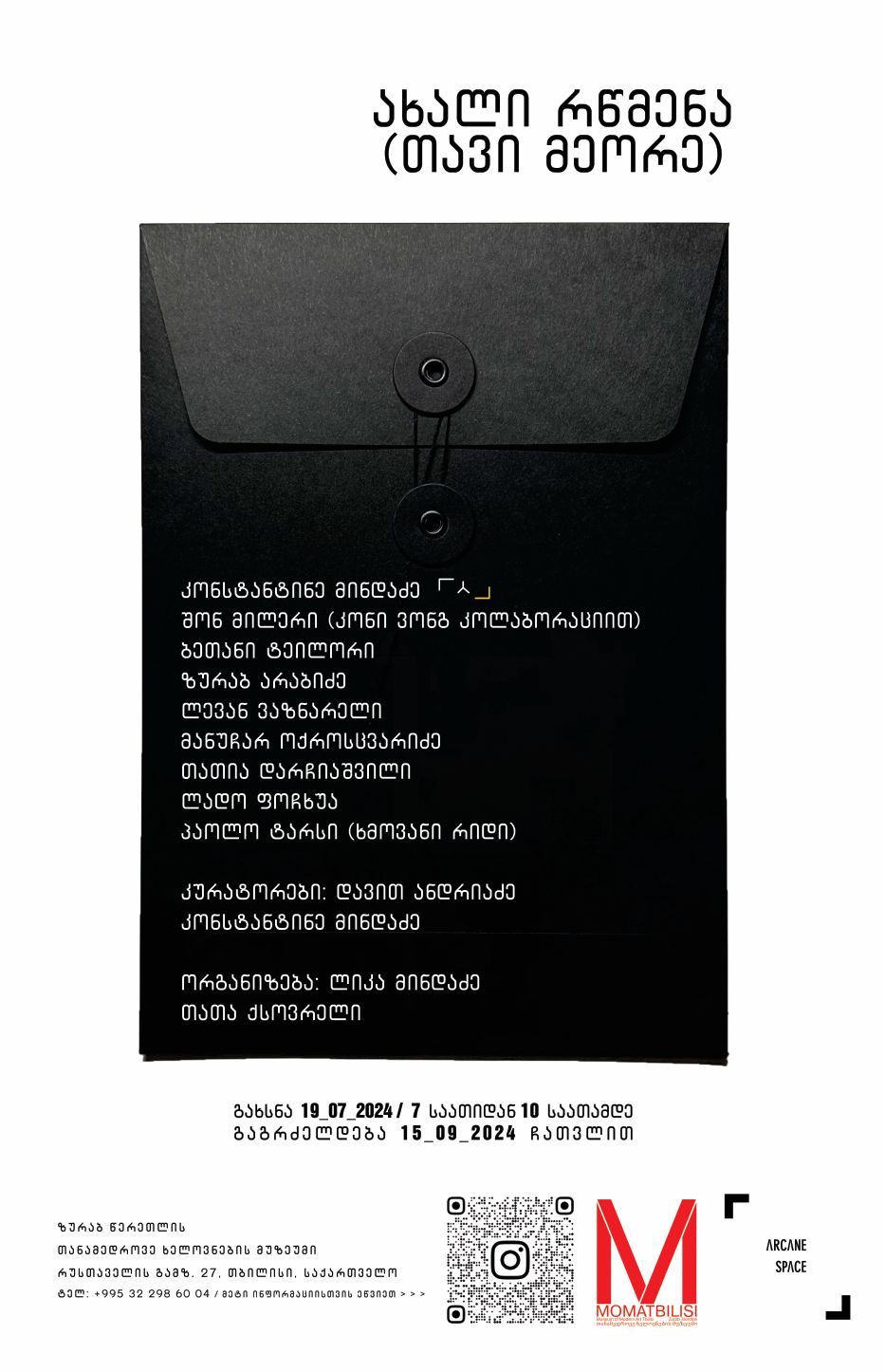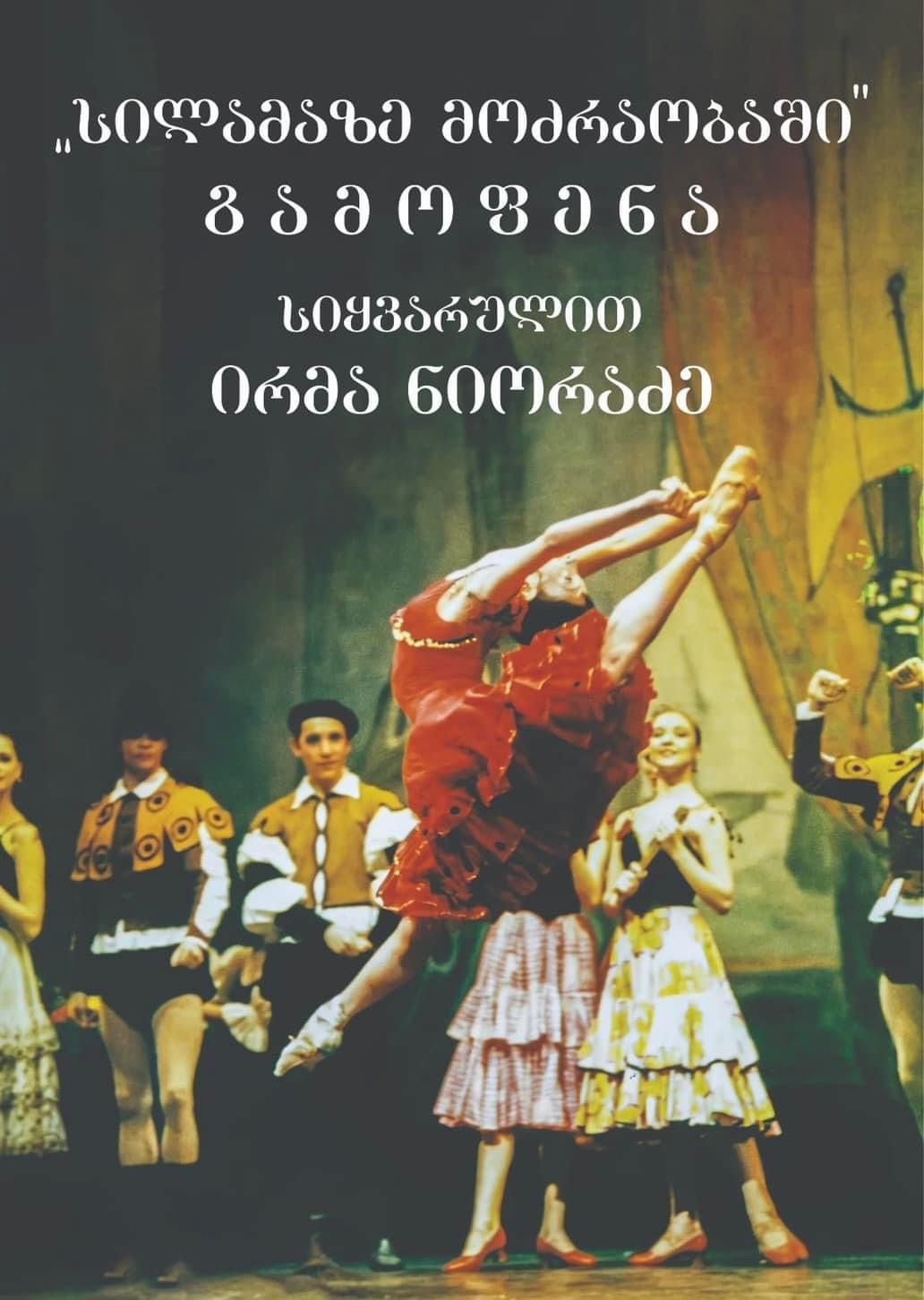
On June 5, at 17:00, the personal exhibition of Gera Ajiashvili - 30 years later will be opened in Zurab Tsereteli Museum of Modern Art.
A White Calling
As once told by Paul Valéry, painting, and sculpture are the abandoned children of architecture. For years, and years through the synthesis of arts, the world has been trying to resurrect the dead “mother”.
Gera Adjiashvili was one of the first who found his place among monumentalists in the 1970s, along with Zurab Tsereteli. Together, in the entrails of architecture, they spared various shapes of sculpture.
A wise and peculiar idea was once uttered by the great French sculptor Antoine Bourdelle: architecture must be a sculpture, and sculpture must be architectural.
And in fact, it's indeed true…
True architecture is a sculpture that absorbs the epoch with its forms while removing the form from the epoch itself.
They never owe each other anything.
The monumentalist must be “lucky”, “lucky” in epoch, environment, and people…
These elements must be combined harmoniously, much like beads, for the sculptor to construct space-sculpted buildings.
A building loves a sculpture and sculpture loves a building. Their refined and tasteful synthesis in the European space proves this dynamics and reflects in the "harmony of a stone".
This harmony and synthesis permeated the entire life of Georgian architect, and designer Gera Adjiashvili, who was born in 1936.
European refinement determined the ideal of plasticism that was distinctive to him. However, he reduced all of the shapes to minimalism.
Sculpture in sculpture and architecture in architecture is “twisted” in his meta-sculpture. That transitions into meta-synthesis and communicates an eagerness to escape the flatness. For him, plaster is not a surrogate for marble or bronze, in which the truths of form and material do not compete but rather coexist and revive in flatness. Similar to Lucio Fontana, it almost seems as though they are about to burst through this flat surface.
His time is a backdrop for his meta-sculptures - lines sculpted from antiquity to the Soviet era are frozen in steamy stills of his work. These lines are both free and locked, punished and cracked, full of shapes fueled by culture and vibrant modules, conveying dialogue between the tectonic and the a-tectonic…Gera Adjiashvil's era is precisely such - ruthless and sparing. He is constantly on a boundary that very few can handle, carry, or pass.
He did, however, endure and became an epoch interpreter. His graphics, like his architectural and design vision, are refined. These characteristics eventually come together under a plastic rubric, revealing a master who found himself even during the Soviet Union's aesthetic quarantine and settled down by "playing" on the border of subjects and abstraction.
Gera Adjiashvili left this world at the age of acme - he was only 57…
Perhaps nothing is harder than breaking through flat surfaces…
His plastic variations, which emerge from the surrounding white void demonstrate how lines can become poetry in the hands of a great architect and have the ability to produce rhythms.
The end of Gera Adjiashvili's vivid and flexible lines marks the start of a new epoch, which began in the 1990s and brought new lines within.
Confucious wrote that "by three methods we may learn wisdom: First, by reflection, which is noblest; second, by imitation, which is easiest; and third by experience, which is the bitterest."
Gera Adjiashvili's art is a wise man's calling...
A calling steeped in bitter historical experiences...
Gera Adjiashvili was one of the first who found his place among monumentalists in the 1970s, along with Zurab Tsereteli. Together, in the entrails of architecture, they spared various shapes of sculpture.
A wise and peculiar idea was once uttered by the great French sculptor Antoine Bourdelle: architecture must be a sculpture, and sculpture must be architectural.
And in fact, it's indeed true…
True architecture is a sculpture that absorbs the epoch with its forms while removing the form from the epoch itself.
They never owe each other anything.
The monumentalist must be “lucky”, “lucky” in epoch, environment, and people…
These elements must be combined harmoniously, much like beads, for the sculptor to construct space-sculpted buildings.
A building loves a sculpture and sculpture loves a building. Their refined and tasteful synthesis in the European space proves this dynamics and reflects in the "harmony of a stone".
This harmony and synthesis permeated the entire life of Georgian architect, and designer Gera Adjiashvili, who was born in 1936.
European refinement determined the ideal of plasticism that was distinctive to him. However, he reduced all of the shapes to minimalism.
Sculpture in sculpture and architecture in architecture is “twisted” in his meta-sculpture. That transitions into meta-synthesis and communicates an eagerness to escape the flatness. For him, plaster is not a surrogate for marble or bronze, in which the truths of form and material do not compete but rather coexist and revive in flatness. Similar to Lucio Fontana, it almost seems as though they are about to burst through this flat surface.
His time is a backdrop for his meta-sculptures - lines sculpted from antiquity to the Soviet era are frozen in steamy stills of his work. These lines are both free and locked, punished and cracked, full of shapes fueled by culture and vibrant modules, conveying dialogue between the tectonic and the a-tectonic…Gera Adjiashvil's era is precisely such - ruthless and sparing. He is constantly on a boundary that very few can handle, carry, or pass.
He did, however, endure and became an epoch interpreter. His graphics, like his architectural and design vision, are refined. These characteristics eventually come together under a plastic rubric, revealing a master who found himself even during the Soviet Union's aesthetic quarantine and settled down by "playing" on the border of subjects and abstraction.
Gera Adjiashvili left this world at the age of acme - he was only 57…
Perhaps nothing is harder than breaking through flat surfaces…
His plastic variations, which emerge from the surrounding white void demonstrate how lines can become poetry in the hands of a great architect and have the ability to produce rhythms.
The end of Gera Adjiashvili's vivid and flexible lines marks the start of a new epoch, which began in the 1990s and brought new lines within.
Confucious wrote that "by three methods we may learn wisdom: First, by reflection, which is noblest; second, by imitation, which is easiest; and third by experience, which is the bitterest."
Gera Adjiashvili's art is a wise man's calling...
A calling steeped in bitter historical experiences...
David Andriadze
Art Critic
Doctor of Philosophical Sciences
Professor






